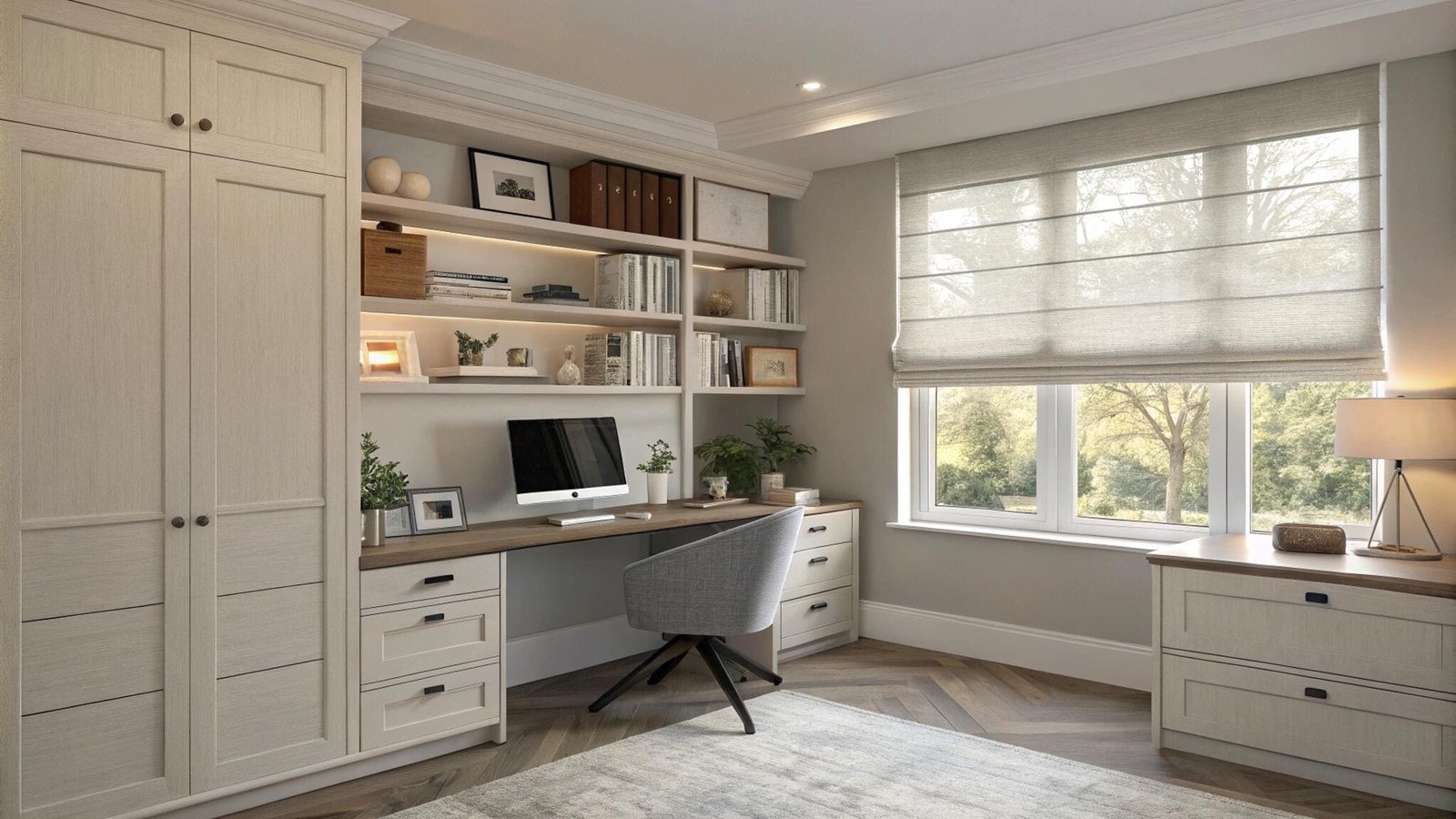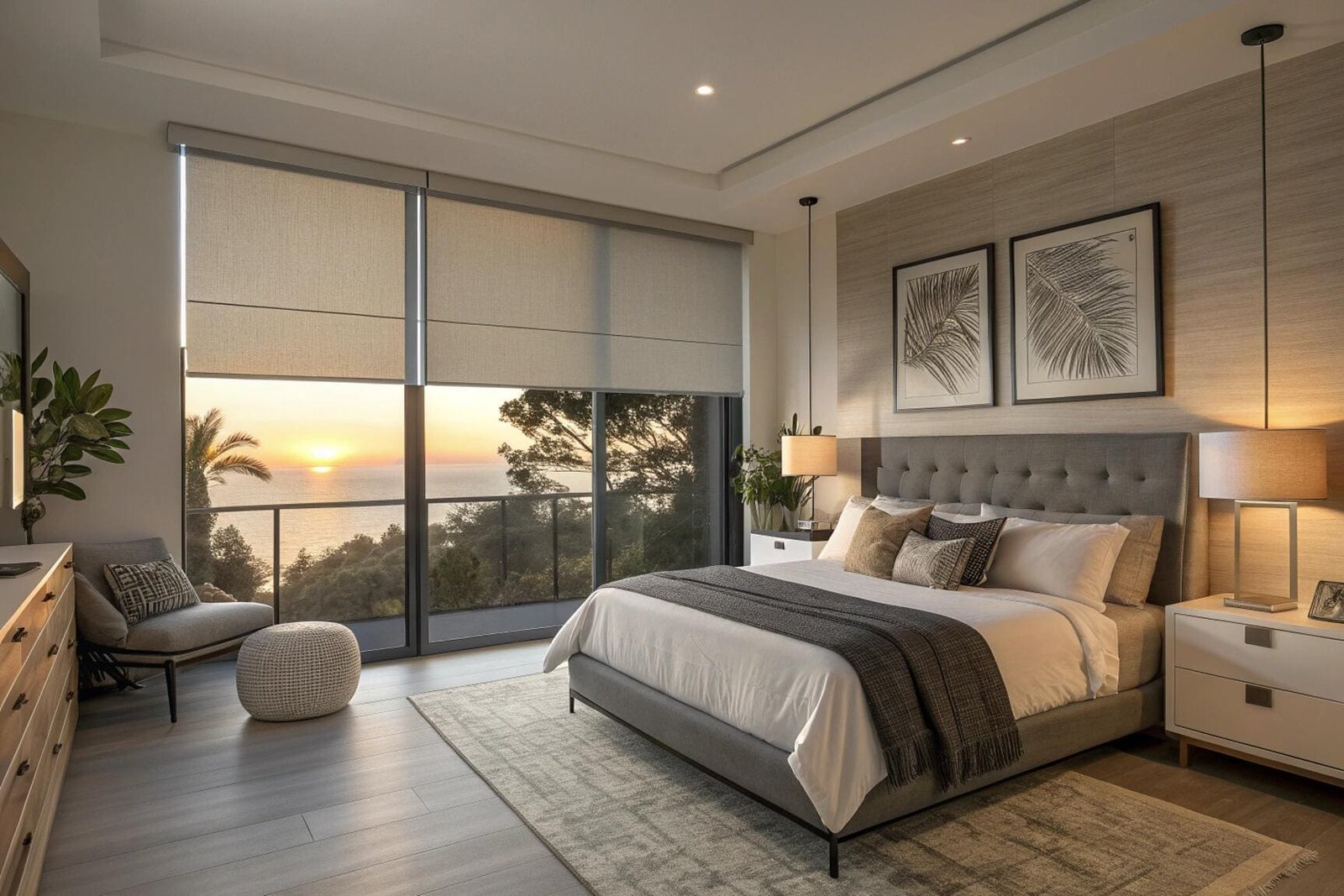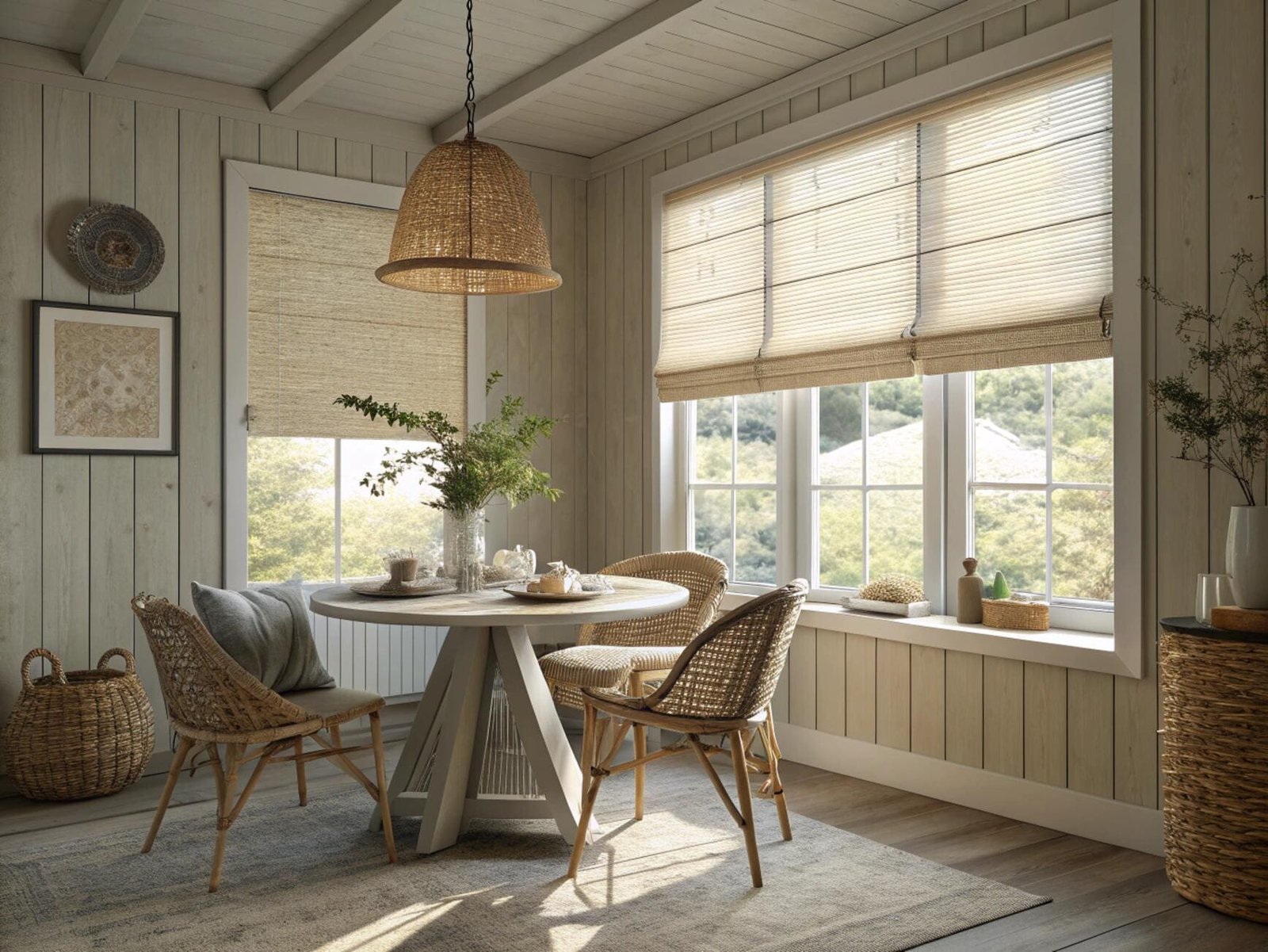Struggling with light control and privacy? The wrong shades can make a room feel like a cave or put you on display. Let's find the perfect balance for your space.
Blackout shades[^1] use opaque fabrics to block 100% of light and UV rays, ensuring total privacy. Light-filtering shades[^2] are made of lighter woven materials that soften sunlight, reduce glare, and maintain a view, while still offering some privacy.

The choice seems simple, but the real magic is in the details. As a project contractor, Emma, you know that the right spec wins the bid. Let's dive deeper to make sure you have all the facts to power your projects.
What is the difference between blackout shades and light filtering shades?
Confused by window treatment jargon? It's frustrating when technical terms obscure a simple choice. I'll explain the core difference between these two popular shade types in simple terms.
The main difference is the fabric. Blackout shades use dense, opaque materials to block all light, offering total privacy and UV protection[^3]. Light-filtering shades use lighter, woven fabrics to gently diffuse sunlight, preserving natural light and views while adding daytime privacy.

When I first started sourcing fabrics, this was the most fundamental distinction. Blackout fabrics are dense and solid, designed with one goal: to block light completely. This makes them the ultimate choice for privacy and darkness. Light-filtering fabrics, on the other hand, are constructed from woven materials. Think of them as a "filter" for the sun. They let the light in but soften it, cutting the harshness and glare while still illuminating the space. While blackout fabric blocks 100% of incoming light, light-filtering fabrics let a pleasant, diffused glow shine through. It’s also worth knowing about "room darkening" fabrics, which sit in the middle. They block more light than light-filtering options but might still have tiny pinholes of light or gaps on the sides, unlike a true blackout solution.
Can you see through light filtering shades at night?
Worried about privacy after the sun goes down? Light filtering shades are great during the day, but at night, they can leave you feeling exposed. Let's solve this common problem.
Yes, if your indoor lights are on, people can likely see through light-filtering shades at night. This is because you can always see through to where the light is greatest, creating a "fishbowl effect." For nighttime privacy, a second, opaque layer is needed.

This is one of the most common questions my clients ask, and the physics are quite simple. Privacy shades work based on the light source. During the day, the sun is outside, making it the primary light source. This allows you to see out while preventing people from seeing in. However, as soon as the sun sets and you turn on your lights, your home becomes the light source. This reverses the effect, making your indoor activities visible from the outside. I’ve heard many fellow homeowners on Reddit mention this "fishbowl effect." For spaces like living rooms where you want daytime light but nighttime privacy, the solution is to pair your light-filtering shades with another layer. This could be traditional curtains or, as I'll discuss later, an integrated dual-shade system that provides a blackout option on the same bracket.
Is there a shade I can see out of but people can't see in?
Want to enjoy your beautiful view without inviting prying eyes? It's a common dilemma. Sacrificing your view for privacy feels like a loss. There's a solution that gives you both.
Yes, solar shades offer this one-way visibility during the daytime. They are a type of light-filtering shade designed to block the sun but not the view. However, this effect reverses at night when your interior lights are on, requiring a second shade for privacy.

This is where we get into a key technical spec I always discuss with project buyers like Emma: the "openness factor". Solar shades[^4] are made from a technical mesh fabric, and the openness factor, usually ranging from 1% to 14%, tells you how tight the weave is. A lower number, like 3-5%, provides a tighter weave. This gives you more daytime privacy and heat reduction while still preserving a good view. This is the sweet spot for most of my residential projects. A higher number, like 10% or more, gives you a much clearer, more excellent view but offers less privacy and glare control. So, for a client with a stunning city view who is worried about being seen during the day, a solar shade with a 3-5% openness factor is the perfect daytime solution. Just remember to plan for nighttime privacy.
Are light filtering shades a good choice for modern projects?
Do your clients want bright, airy spaces without the harsh glare and heat? Blackout shades can feel too heavy, killing the mood. Light filtering shades offer a sophisticated solution.
Yes, they are excellent for common areas like living rooms and offices. They reduce glare on screens, soften natural light to create a warm glow, and provide significant UV protection to prevent furniture from fading, all while maintaining daytime privacy.

Light-filtering shades are a fantastic choice for many parts of a home or office. Their main job is to manage, not eliminate, natural light. They turn harsh, direct sunlight into a soft, usable glow that makes a room feel welcoming. This is perfect for home offices and living rooms, as it significantly reduces glare on TV and computer screens. They also do a good job of blocking UV rays, which helps protect expensive furniture, artwork, and flooring from fading over time. While they offer daytime privacy, their biggest drawback is the lack of nighttime privacy and their limited insulation capabilities. They won't do much to block cold air, as their lighter, woven construction isn't designed for thermal performance. However, for creating a bright and productive environment without feeling like you're in a "dark cave," they are often the best choice.
When are blackout shades the best possible solution?
Need to guarantee a perfect night's sleep or create an ideal viewing environment? Lingering light can be a major disruption. Blackout shades provide ultimate control when darkness is non-negotiable.
Blackout shades are ideal for bedrooms, nurseries, and home theaters where 100% light-blocking is required for better sleep or viewing experiences. They also offer maximum privacy, UV protection, and superior insulation, which helps to keep rooms cooler in summer and warmer in winter.

For certain rooms, there is simply no substitute for blackout shades. They are the number one choice for bedrooms and nurseries because total darkness is proven to improve sleep quality. They give you complete control over privacy, day or night, which is essential for these personal spaces. Beyond light control, one of their biggest benefits is insulation. The dense fabric is great at trapping heat inside during the winter and blocking solar heat during the summer, which can make your home more comfortable and lower energy bills. This directly answers the question of whether they keep a house cooler—yes, they certainly do. They also offer maximum UV protection, blocking up to 100% of the sun's damaging rays to protect your valuables. The only real con is that you lose all natural light when they are closed, but for the right application, that's exactly what you need.
How do I choose the right shade for each room?
Specifying shades for an entire project can be daunting. One wrong choice can compromise a room's function. Here is a simple cheat-sheet to make the right call every time.
For bedrooms, choose blackout shades for total darkness and privacy. Use light-filtering shades in living rooms to create a bright, glare-free ambiance. For west-facing windows with intense sun, a dual-shade system offers the best of both worlds.

When I help designers like Emma plan a full project, we break it down room by room. Each space has a unique need for light control and privacy. Getting this right is key to a happy client. Here is the simple "cheat-sheet" I use to guide selections.
| Room Type | Recommended Shade | Key Benefit |
|---|---|---|
| Bedrooms & Nurseries | Blackout Shades | Promotes better sleep by blocking 100% of light and ensuring complete privacy. |
| Living & Family Rooms | Light-Filtering Shades | Creates a warm, inviting atmosphere by softening sunlight and reducing glare, while preserving the view. |
| West-Facing Windows | Dual-Shade System | Manages intense afternoon sun with a light-filtering layer and provides full privacy/darkness with a blackout layer. |
| Home Offices | Light-Filtering Shades | Reduces glare on computer screens, prevents eye strain, and maintains a connection to the outdoors. |
| Home Theaters | Blackout Shades | Eliminates all light to create an immersive, cinema-quality viewing experience. |
| Bathrooms | Blackout or Room-Darkening | Ensures maximum privacy is available when needed. |
How much heat and fading do these shades really prevent?
Clients are asking about energy savings and protecting their interiors. Can a window shade really make a difference? Let's look at the numbers and see the tangible benefits.
Blackout fabrics can block up to 100% of harmful UV rays, preventing your furniture and floors from fading. Both light-filtering and blackout shades provide insulation, keeping your house cooler in summer and warmer in winter, which can lead to noticeable savings on energy bills.
Let's break down the two key performance metrics: UV protection and thermal insulation.
First, unfiltered sunlight will absolutely damage interiors. UV rays are the primary cause of fading and discoloration in furniture, carpets, and artwork. Here, Blackout shades provide approximately 100% UV blockage, making them the best defense for protecting valuable items. Light-filtering shades offer partial heat reduction and UV protection; they still make a huge difference by reducing the total amount of solar radiation entering a room.
Second, both shade types contribute to energy efficiency. Blackout shades are excellent insulators, blocking summer heat and trapping indoor warmth in the winter. For even better performance, I often recommend cellular honeycomb shades. Their unique cell structure is specifically designed to trap air, providing incredible insulation in both light-filtering and blackout fabrics. Even a light-filtering shade offers significant energy value and helps avoid the "all-or-nothing" darkness that some homeowners dislike.
How do fabric, color, and opacity help me pick the right roll?
Overwhelmed by fabric samples? The color and material aren't just for looks; they directly impact performance. Let's simplify these three key choices to perfect your selection.
Lighter-colored fabrics are better at reflecting heat, helping to keep a room cooler. Darker-colored fabrics provide better glare control and a clearer view to the outside, while also offering more perceived privacy with light filtering options.
I guide my partners through three simple "clicks" to pick the perfect fabric.
First is the fabric type itself—the choice between a woven, light-filtering textile or a dense, opaque blackout material. This is the foundational decision.
Second is color, which has a huge impact on performance. As a general rule, light-colored fabrics are best for keeping a room cool. White and off-white fabrics reflect the most solar energy. In contrast, dark-colored fabrics are better for glare control and preserving views. Your eye is drawn through the dark material to the bright outdoors, making the view seem sharper. Darker colors can also create a greater sense of privacy with light-filtering materials.
Third is opacity. For light-filtering solar shades, this is the "openness factor" we discussed, which controls the balance between view and privacy. For other fabrics, it's the choice between sheer, semi-opaque, or a room-darkening weave. Understanding these three levers allows you to specify a shade with precision.
Is there a way to get both light filtering and blackout in one window?
Torn between a bright daytime view and total nighttime privacy? You shouldn't have to choose. There's an elegant hardware solution that does it all in a single-window treatment.
Yes, a dual-shade system is the perfect solution. It combines two different fabrics—typically a light-filtering or solar shade and a blackout shade—on a single bracket. This allows you to switch between light diffusion and total darkness independently.

This is one of my favorite solutions to offer, as it solves so many problems at once. The dual-shade system uses a single piece of hardware to mount two independent roller shades. Typically, the front layer is a light-filtering or solar shade for daytime use. It cuts glare and provides privacy while the sun is out. The back layer is a blackout shade. When evening comes, you simply roll down the blackout layer for complete privacy and darkness. It is the ultimate day-and-night solution, especially for bedrooms and west-facing windows that need both light management and full privacy. At VelaBlinds, we have hardware that supports dual roller shades and even honeycomb shades that offer a light-filtering fabric and blackout fabric in one unit. This gives you complete, flexible control.
What about maintenance and eco-friendly materials?
Modern clients demand sustainable and low-maintenance products. Are today's smart shades easy to care for and environmentally responsible? The answer is a resounding yes, and it's a key selling point.
Many modern shades are designed for easy care with simple wipe-clean surfaces. Look for high-quality, PVC-free materials and Greenguard certification, which ensures they have no harmful off-gassing and contribute to clean indoor air quality.
In today's market, performance goes beyond light control. For sustainability, I always point clients toward our PVC-free blackout fabrics. These materials are certified by Greenguard, which means they are tested for chemical emissions and contribute to healthier indoor air, a major plus for residential and commercial projects. We also offer beautiful light-filtering shades made from natural, eco-friendly materials like bamboo and woven woods. On the maintenance front, things have gotten much easier. Most of our technical fabrics are designed for durability and are incredibly easy to clean—usually, a simple wipe-down with a damp cloth is all that's needed. This low maintenance is a huge practical benefit that reduces long-term cost and effort for the end-user, adding another layer of value to your project specification.
Conclusion
The right shade balances light, privacy, and energy efficiency. By choosing between light-filtering, blackout, or dual systems for each room, you can create perfectly tailored, functional, and beautiful spaces.
---
[^1]: Explore how blackout shades can enhance your sleep quality and provide maximum privacy.
[^2]: Learn about the advantages of light-filtering shades for creating a bright and inviting atmosphere.
[^3]: Find out how window shades can protect your furniture and interiors from UV damage.
[^4]: Explore the benefits of solar shades for maintaining views while blocking sunlight.Partner with VelaBlinds for Your Next Project
Smart window treatments shouldn't be complicated. After working with 500+ distributors and contractors worldwide, I've streamlined the process to get you quality products, competitive pricing, and reliable support - every time.
Why project professionals choose VelaBlinds:
- ✅ Fast, Accurate Quotes - Detailed specs and pricing within 24 hours
- ✅ Transparent Pricing - No hidden fees, volume discounts clearly outlined
- ✅ Quality Assurance - Direct partnerships with certified OEM manufacturers
- ✅ Project Support - Dedicated account manager from quote to delivery
Start your next project:
📧 Quick Quote: Send your requirements to info@velablinds.com
📱 Direct Contact: WhatsApp +86 137 2012 8317
🌐 Browse Solutions: https://velablinds.com/
📁 Product Resources: Access spec sheets, catalogs & project files
Paul Chen, Founder
"I built VelaBlinds to solve the real challenges I faced as a project buyer - long lead times, unclear specs, and unreliable suppliers. Let's discuss how we can power your projects with smarter blinds."
Serving distributors and contractors across North America, Europe, and Australia since 2018.




